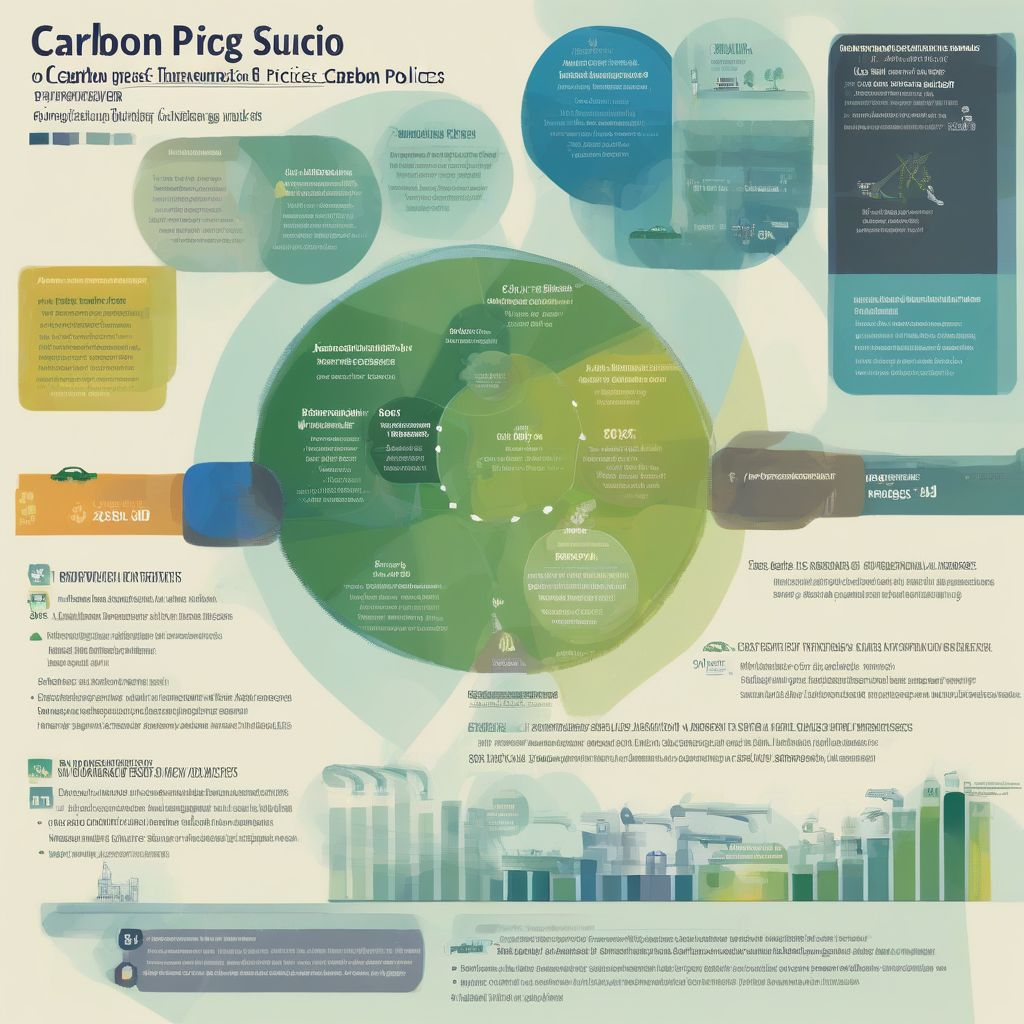Imagine a world where the air is clean, the ice caps aren’t melting, and businesses thrive while contributing to a sustainable future. Sounds like a dream, right? Carbon pricing policies are one tool aimed at making this dream a reality by putting a price tag on greenhouse gas emissions. But how exactly are these policies impacting industries across the globe? Let’s dive in and explore the ripple effects of this crucial climate action tool.
Understanding Carbon Pricing Mechanisms
Before we delve into the impacts, let’s quickly clarify what carbon pricing is all about. There are two main mechanisms:
Emissions Trading Systems (ETS)
Also known as cap-and-trade, ETS sets a limit (cap) on the total amount of greenhouse gases that can be emitted by businesses. Companies are then issued permits allowing them to emit a certain amount within that cap. These permits can be traded, creating a market where companies that reduce emissions below their allotted amount can sell their excess permits to those exceeding their limit. This incentivizes emission reductions while providing flexibility.
Carbon Taxes
A carbon tax puts a direct price on each ton of greenhouse gas emissions produced by a company. This straightforward approach provides a clear financial incentive for businesses to reduce their carbon footprint.
Industry Impacts: A Mixed Bag
The impact of carbon pricing policies varies significantly across industries, depending on factors like energy intensity, ability to pass on costs, and access to low-carbon alternatives. Let’s examine some key sectors:
Energy Sector
Unsurprisingly, the energy sector is at the forefront of carbon pricing impacts. Companies reliant on fossil fuels face increased costs, pushing them towards cleaner energy sources like renewables. This can spur innovation and investment in green technologies, creating new opportunities for growth.
Manufacturing
Manufacturing industries, particularly those with energy-intensive processes like cement and steel production, also experience significant pressure under carbon pricing. The cost of emissions can impact competitiveness, leading to potential relocation of facilities or adoption of energy-efficient technologies.
Transportation
The transportation sector, a major contributor to greenhouse gas emissions, is also feeling the heat. Carbon pricing can lead to higher fuel prices, encouraging the adoption of electric vehicles, public transport, and more efficient logistics.
Agriculture
Agriculture, while contributing to emissions, can also benefit from carbon pricing. Practices like carbon sequestration in soil offer farmers the opportunity to generate carbon credits and offset their emissions, potentially creating a new revenue stream.
Navigating the Challenges and Opportunities
While carbon pricing presents challenges, it also opens doors to innovation and sustainable growth.
Challenges
- Competitiveness: Industries in regions with stringent carbon pricing policies may face a competitive disadvantage against those in regions with less stringent regulations.
- Cost Pass-Through: Businesses may struggle to pass on increased costs to consumers, impacting profitability.
- Carbon Leakage: Companies might relocate to regions with weaker carbon pricing, negating the overall emissions reduction goal.
Opportunities
- Innovation: Carbon pricing can drive investment in and development of low-carbon technologies and processes.
- Green Jobs: The transition to a low-carbon economy can create new jobs in renewable energy, energy efficiency, and other green sectors.
- Sustainable Growth: By internalizing the cost of emissions, carbon pricing can contribute to a more sustainable and resilient economy.
Real-World Examples
The European Union’s Emissions Trading System (EU ETS) is a prime example of a large-scale carbon pricing mechanism. It has demonstrably reduced emissions in the power sector while stimulating investment in renewable energy. Canada’s carbon tax, implemented nationwide, has also shown positive results, generating revenue that is often returned to households through rebates.
“The future belongs to those who understand that doing good for the planet is also good for business.” – Hypothetical quote from a sustainability expert.
 Carbon Pricing Impact on Industries
Carbon Pricing Impact on Industries
Adapting to the Changing Landscape
Industries are adapting to carbon pricing pressures in various ways:
Investing in Energy Efficiency
Companies are implementing energy-efficient technologies and processes to reduce their emissions and operating costs.
Embracing Renewable Energy
Switching to renewable energy sources like solar and wind power is a key strategy for decarbonizing operations.
Developing Carbon Capture Technologies
Carbon capture, utilization, and storage (CCUS) technologies are gaining traction as a way to reduce emissions from industrial processes.
Conclusion
Carbon pricing policies are undeniably reshaping industries across the globe. While challenges exist, particularly around competitiveness and cost pass-through, the opportunities for innovation, green job creation, and sustainable growth are significant. By understanding the nuances of these policies and proactively adapting, businesses can not only mitigate the risks but also position themselves at the forefront of the low-carbon future. What are your thoughts on the role of carbon pricing in shaping a sustainable future? Share your insights in the comments below! Explore more about how international climate agreements influence energy policy on our website. Let’s collaborate to build a greener tomorrow.



